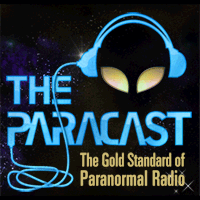I have been called 'the best' reader of Tarot by many who I read for, I never charged or accepted (when offered) any money. I said it was a blessing and I was a conduit or flux that happened to work and which did not always work so well. I would congratulate the person on having centered themselves well which I always had them do before each reading as they held the cards and concentrated on their question.
Jungian psychoanalysis is borne from visions he saw, in many ways. His knowledge and scientific method was of the highest calibre. In this Tarot site we have a person worth reading talking about Jung's knowledge of the Tarot.
"Dierdre Bair recounts in Jung: A Biography (Little, Brown, 2003, p. 549) that in 1950 Jung assigned to each of the four members of his Psychology Club an ‘intuitive, synchronistic method’ to explore. Hanni Binder was to research the Tarot and teach him how to read the cards. They determined that Grimaud’s Ancien Tarot de Marseille “was the only deck that possessed the properties and fulfilled the requirements of metaphor that he gleaned from within the alchemical texts.” Hanni Binder’s work amounted to very little as can be seen from her report preserved at the Jung Institute in New York. The group disbanded around 1954.
What was behind Jung’s attempt to gather all this material? Marie-Louise von Franz recounts in Psyche and Matter (1988) that toward the end of his life:
Jung suggested investigating cases where it could be supposed that the archetypal layer of the unconscious is constellated*—following a serious accident, for instance, or in the midst of a conflict or divorce situation—by having people engage in a divinatory procedure: throwing the I Ching, laying the Tarot cards, consulting the Mexican divination calendar, having a transit horoscope or a geomantic reading done. If Jung’s hypothesis is accurate, the results of all these procedures should converge. . . . [*a Jungian term meaning ‘the coming together of elements in the unconscious so that they form a consciously recognizable pattern of relationships.’ Christine Houde adds, “The constellated material is activated in the psyche of the individual where it attempts to erupt into the field of experience.”]
“[This investigation would consist of] studying an incident (accident) by the convergence . . . of a multitude of methods, with the help of which we could try to find out what the Self “thought” of this particular accident. . . . The generally rather vague formulations of divinatory techniques resemble these “clouds of cognition” that, according to Jung, constitute “absolute knowledge.”
Von Franz further explains that Jung’s “clouds of cognition” represents an awareness on the part of our conscious intelligence of a far vaster field of information, an “absolute knowledge,” within the collective unconscious. These images, on the part of a “more or less conscious ego,” lack precise focus and detail. Thus, the realization of meaning has to be “a living experience that touches the heart just as much as the mind.” She continues:
“Archetypal dream images and the images of the great myths and religions still have about them a little of the “cloudy” nature of absolute knowledge in that they always seem to contain more than we can assimilate consciously, even by means of elaborate interpretations. They always retain an ineffable and mysterious quality that seems to reveal to us more than we can really know.”*
On 9 February 1960, about a year before he died, Jung wrote Mr. A. D. Cornell about the disappointing end to his grand experiment:
“Under certain conditions it is possible to experiment with archetypes, as my ‘astrological experiment’ has shown. As a matter of fact we had begun such experiments at the C. G. Jung Institute in Zurich, using the historically known intuitive, i.e., synchronistic methods (astrology, geomancy, Tarot cards, and the I Ching). But we had too few co-workers and too little means, so we could not go on and had to stop.”
The experiment proposed by Jung is discussed in the Journal of Parapsychology (March 1998): in an article titled: “The Rhine-Jung letters: distinguishing parapsychological from synchronistic events – J.B. Rhine; Carl Jung” by Victor Mansfield, Sally Rhine-Feather, James Hall. The authors conclude:"
https://marygreer.wordpress.com/2008...ung-and-tarot/

 ) Then came what I consider the 'Next Generation' with Kryten and action! Explosions! Awesomeness!
) Then came what I consider the 'Next Generation' with Kryten and action! Explosions! Awesomeness!